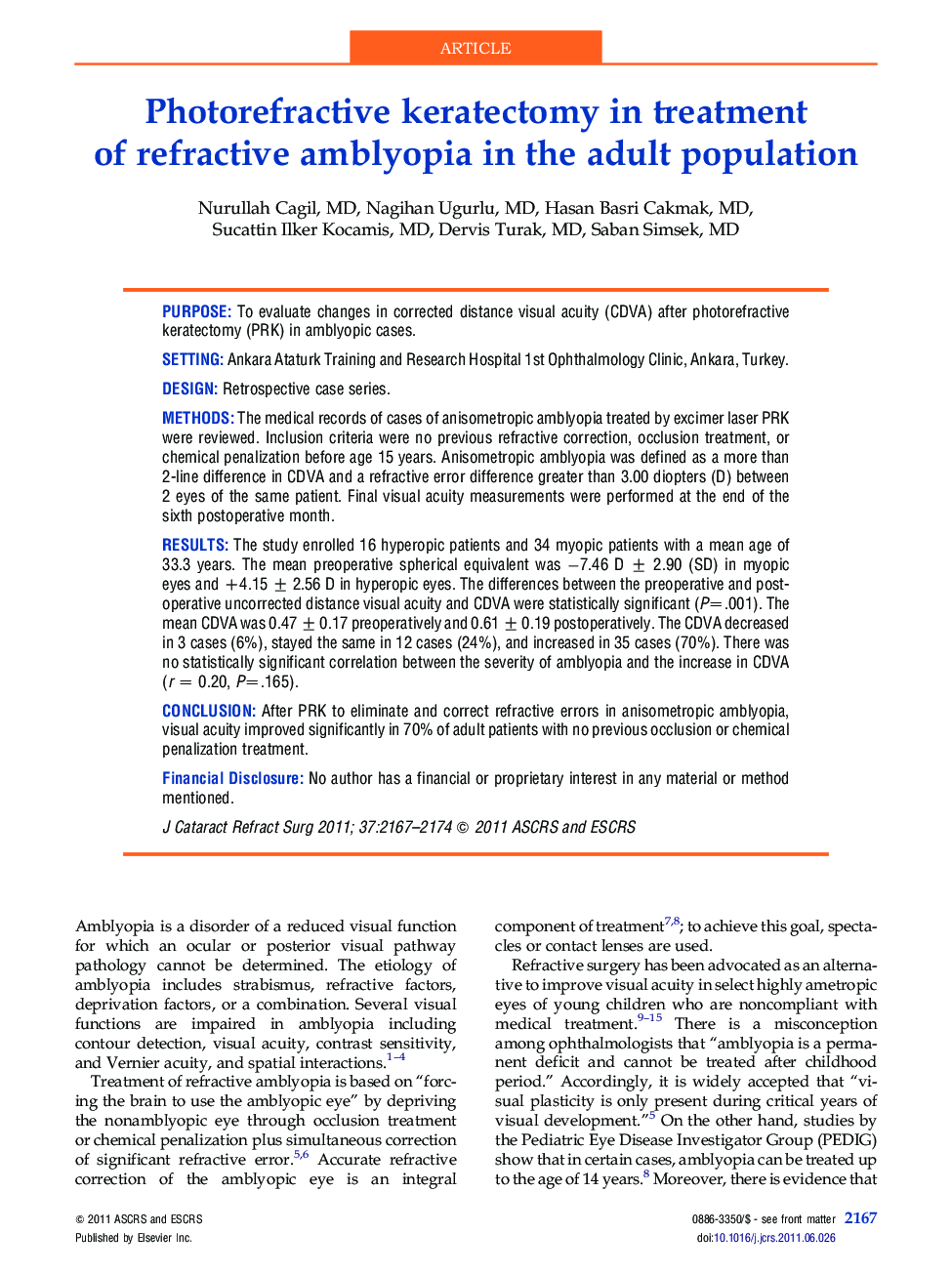| Article ID | Journal | Published Year | Pages | File Type |
|---|---|---|---|---|
| 4018446 | Journal of Cataract & Refractive Surgery | 2011 | 8 Pages |
PurposeTo evaluate changes in corrected distance visual acuity (CDVA) after photorefractive keratectomy (PRK) in amblyopic cases.SettingAnkara Ataturk Training and Research Hospital 1st Ophthalmology Clinic, Ankara, Turkey.DesignRetrospective case series.MethodsThe medical records of cases of anisometropic amblyopia treated by excimer laser PRK were reviewed. Inclusion criteria were no previous refractive correction, occlusion treatment, or chemical penalization before age 15 years. Anisometropic amblyopia was defined as a more than 2-line difference in CDVA and a refractive error difference greater than 3.00 diopters (D) between 2 eyes of the same patient. Final visual acuity measurements were performed at the end of the sixth postoperative month.ResultsThe study enrolled 16 hyperopic patients and 34 myopic patients with a mean age of 33.3 years. The mean preoperative spherical equivalent was −7.46 D ± 2.90 (SD) in myopic eyes and +4.15 ± 2.56 D in hyperopic eyes. The differences between the preoperative and postoperative uncorrected distance visual acuity and CDVA were statistically significant (P=.001). The mean CDVA was 0.47 ± 0.17 preoperatively and 0.61 ± 0.19 postoperatively. The CDVA decreased in 3 cases (6%), stayed the same in 12 cases (24%), and increased in 35 cases (70%). There was no statistically significant correlation between the severity of amblyopia and the increase in CDVA (r = 0.20, P=.165).ConclusionAfter PRK to eliminate and correct refractive errors in anisometropic amblyopia, visual acuity improved significantly in 70% of adult patients with no previous occlusion or chemical penalization treatment.Financial DisclosureNo author has a financial or proprietary interest in any material or method mentioned.
